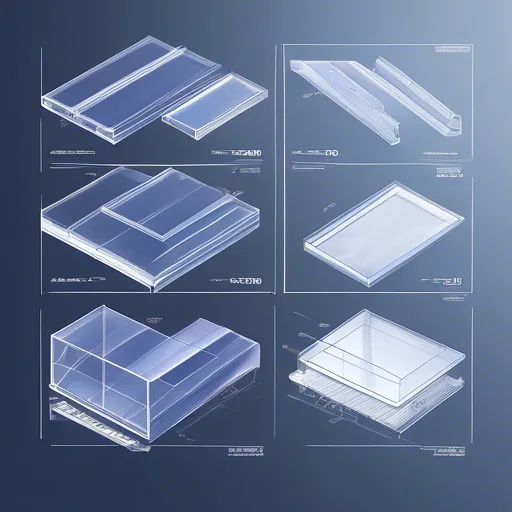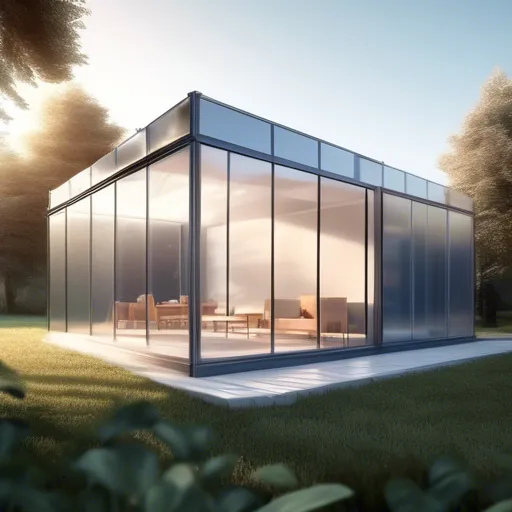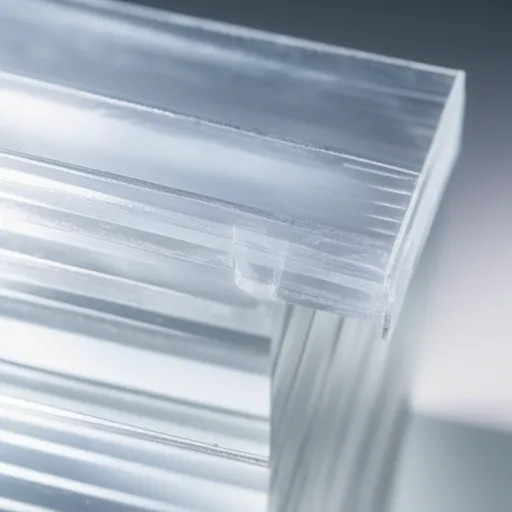
Step into the world of construction and innovative design with monolithic polycarbonate, a revolution in material science that offers unparalleled versatility. From greenhouses to stadium roofs, this material is proving to be a go-to choice for a variety of projects, big and small. Here’s an in-depth look at the different types, unique characteristics, and the beauty of its installation.
Types of Monolithic Polycarbonate
Like a chameleon of the construction world, monolithic polycarbonate morphs into the specific needs of any project. Here are its prominent types:
Clear
Known for its transparency, clear polycarbonate acts as a robust substitute for glass with the added bonus of being lightweight and impact-resistant.
Opaque
This cousin of the clear type shrouds environments in privacy and protection, lending itself perfectly to applications where discreetness is key.
Coloured
Imagine a greenhouse glimmering in emerald or a stadium roof glowing with tints of azure. Coloured monolithic polycarbonate is not just functional; it’s an aesthetic game-changer.

Characteristics That Set the Standard
So, what makes this material a darling in modern architecture? Dive into the defining characteristics below:
- Strength: Up to 200 times stronger than glass and 50% lighter, this material is clearly no pushover.
- UV Protection: It comes with the superpower of blocking harmful UV rays, making it ideal for outdoor structures.
- Thermal Insulation: Keep interiors cozy or cool with its phenomenal insulating abilities.
- Flexibility: Easy to cut and shape, it molds effortlessly to creative and architectural whims.
Interesting Fact: This material is often used in riot shields and protective eyewear, proving its unmatched strength and reliability.
The Art of Installation
Despite its advanced performance attributes, installing monolithic polycarbonate is akin to completing a stimulating puzzle, demanding some finesse but promising outstanding rewards. Here’s how to nail it:
Preparation
Prior to installation, ensure there’s a creative setting ready to receive the polycarbonate sheets. Clearing the area and preparing the support structure is imperative.
Handling and Transportation
Handle with care; although it’s strong, improper transportation can lead to scratches or unwanted deformations. Consider using protective coverings during this phase.

Fitting Process
Installation can vary from a standing seam system to simple fixing with bolts and screws. It’s all in the details, particularly the placement of seals and gaskets to ensure watertight integrity.
Interesting Fact: The Eden Project’s striking biomes in Cornwall are a testament to the ambitious use of polycarbonate in modern architecture.
Comparing with Other Materials
In a world of materials—each promising the Earth—which one is the right fit for your needs?
- Glass vs. Polycarbonate: Glass might have the old-world charm, but polycarbonate offers toughness without the breakability. Consider it for projects needing durability over delicacy.
- Acrylic vs. Polycarbonate: Both materials race head-to-head in aesthetics, but polycarbonate gallops ahead with impact resistance.
Want more vibrant ideas for stylish and functional interiors? The polycarbonate material aligns perfectly with modern design aesthetics.

Final Thoughts
From form to functionality, monolithic polycarbonate stands out as a material for innovators and dreamers. Whether you’re building a bold architectural marvel or just remodeling a 14 m2 kitchen, the possibilities are as vast as your vision. The question remains: what will you create with it?
Monolithic polycarbonate: it’s not just about keeping the rain off your head; it’s about letting your imagination touch the sky.
